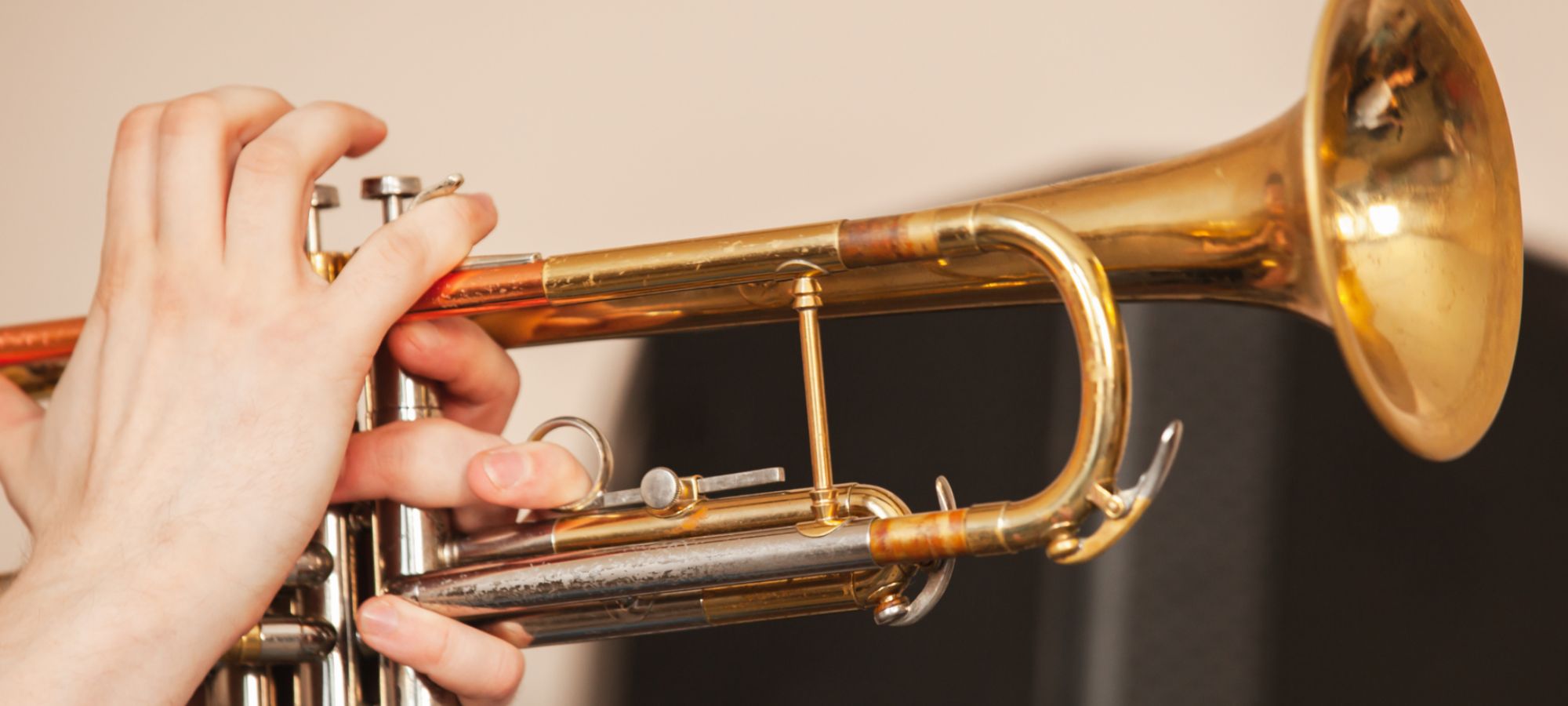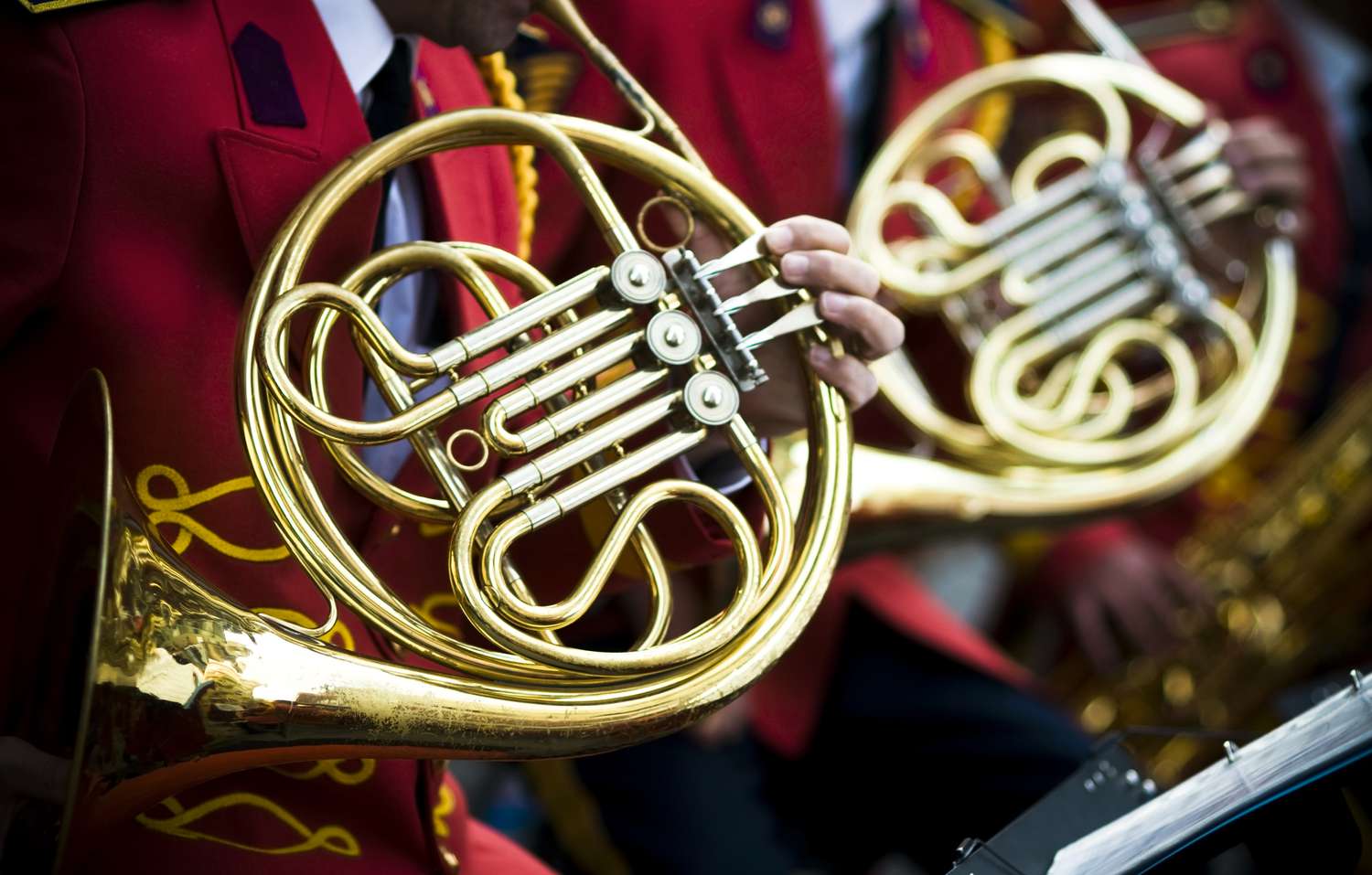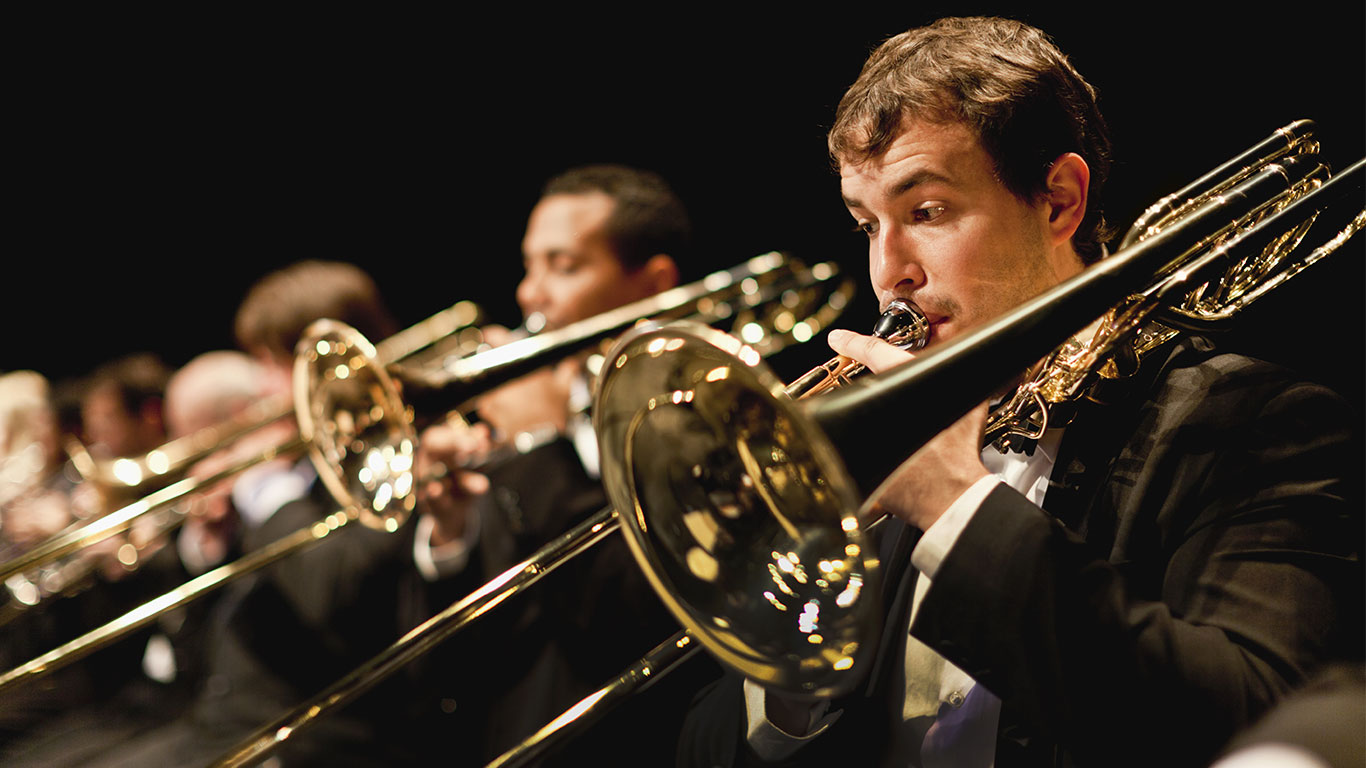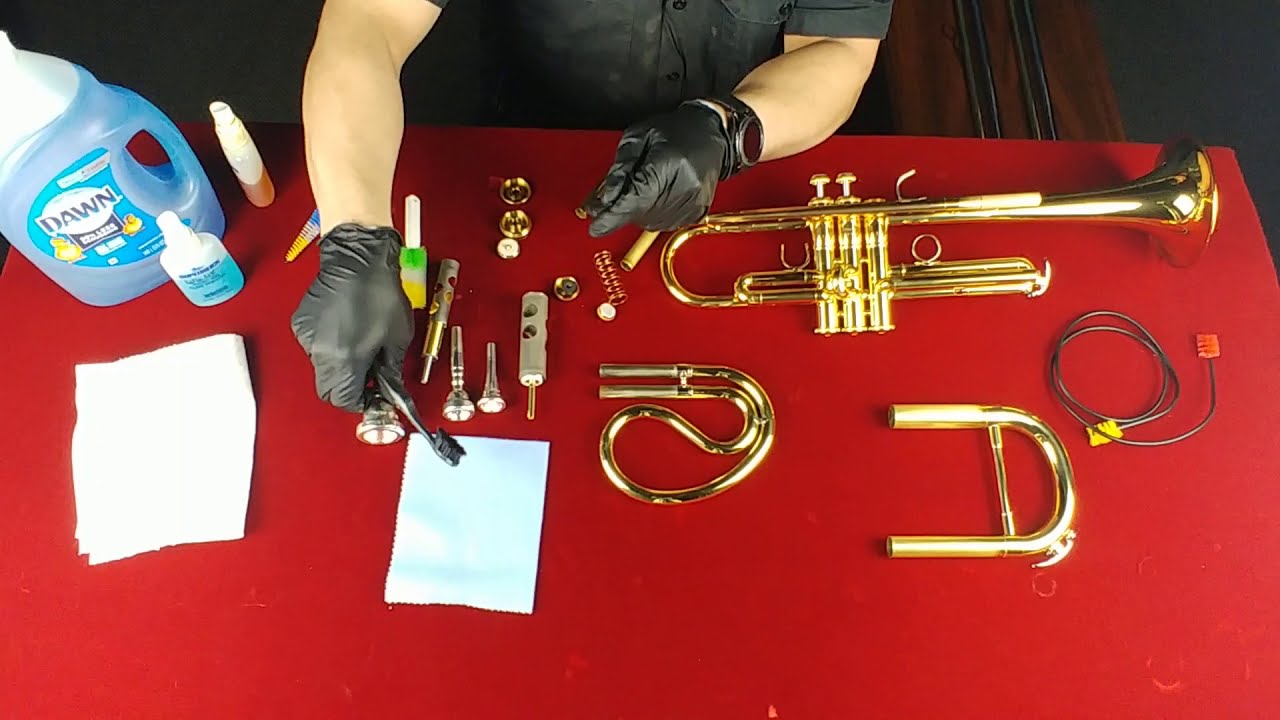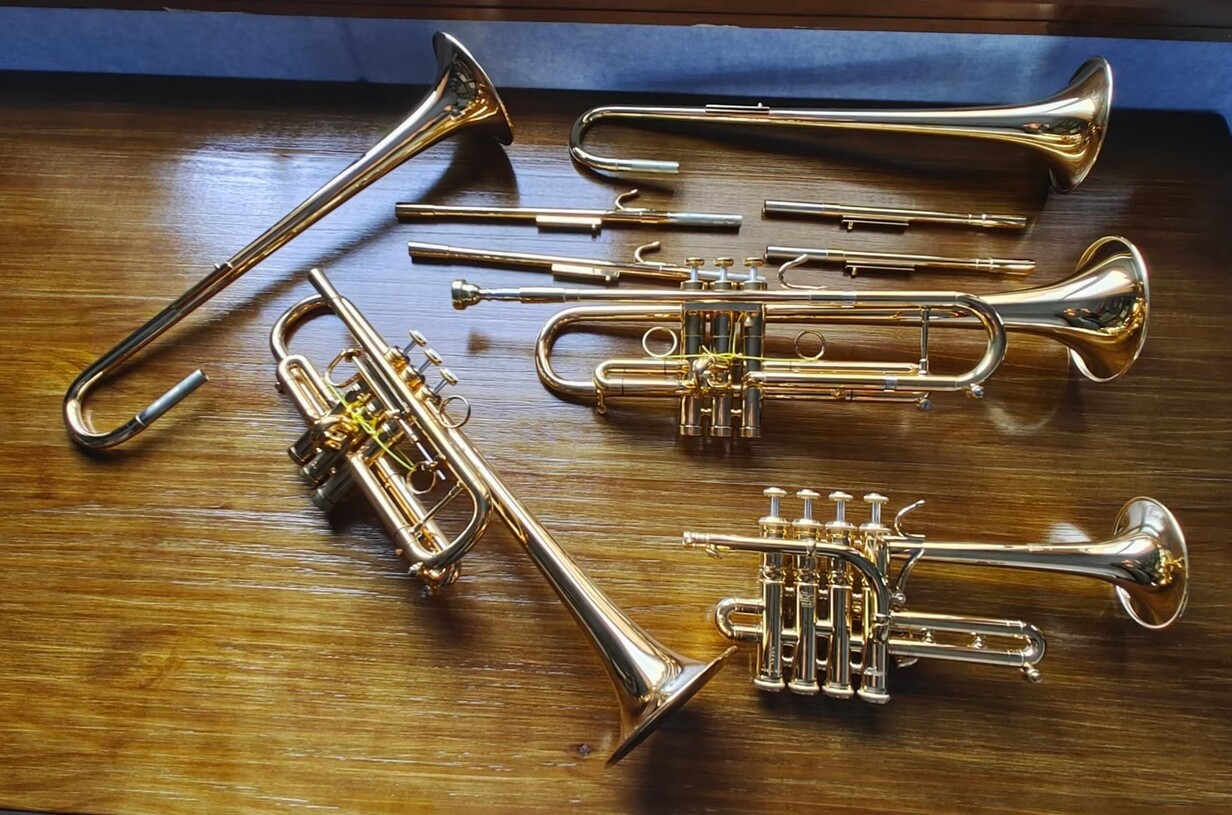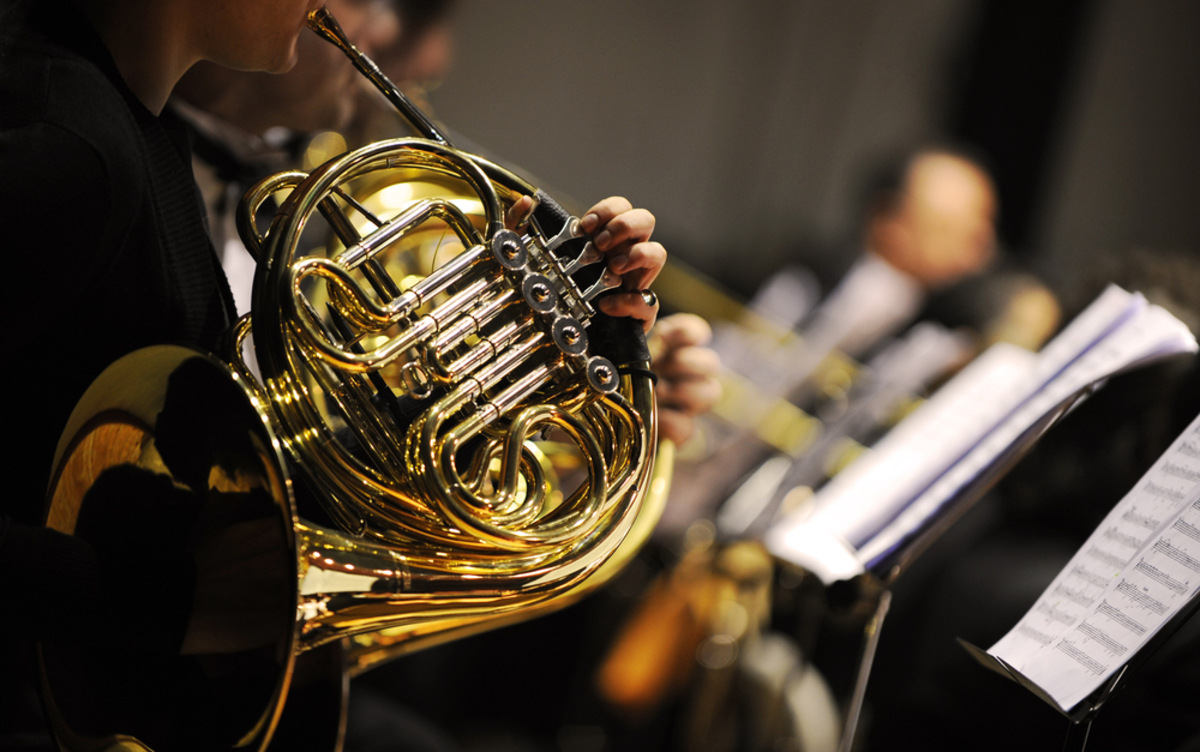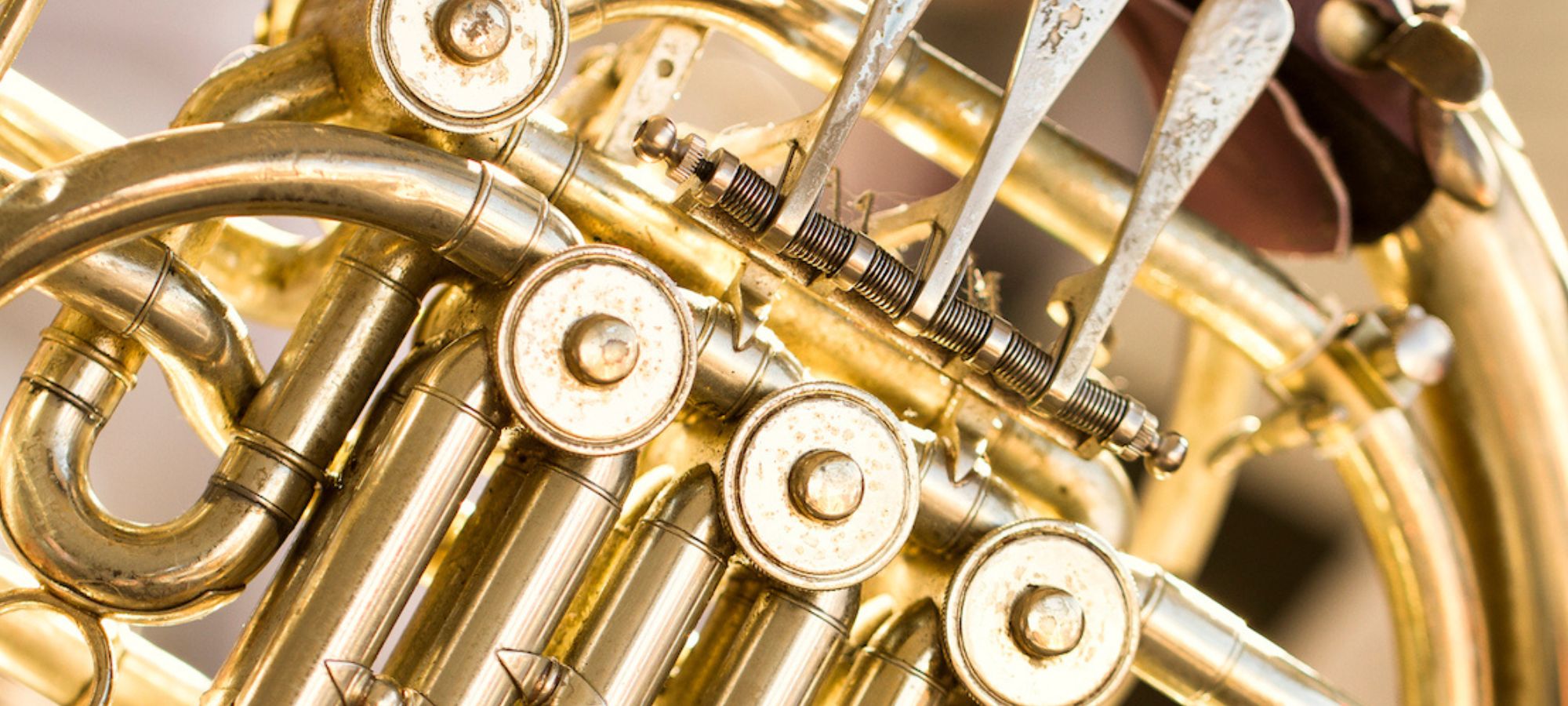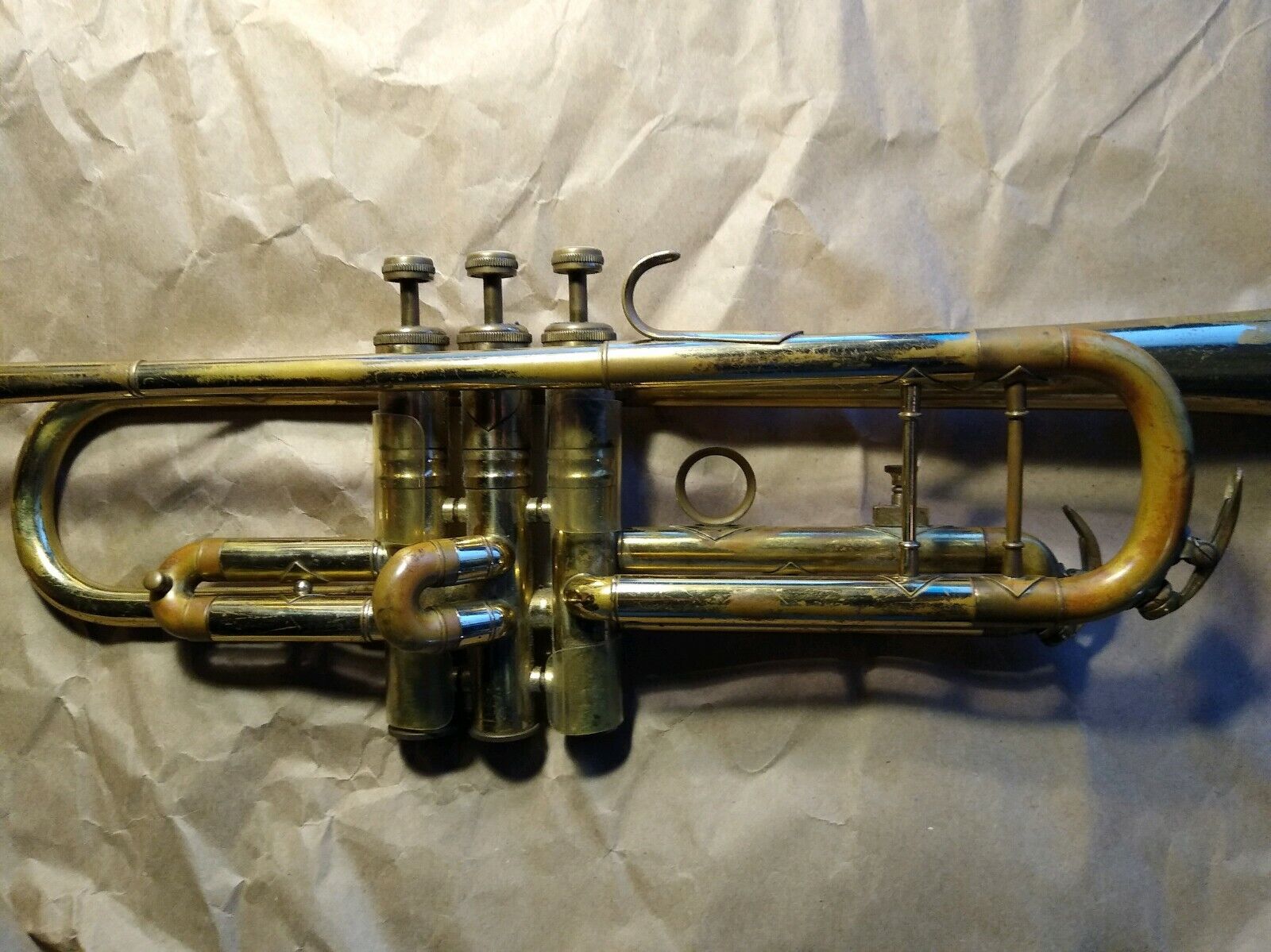Home>Instruments>Brass Instruments>Why Are Low Brass Instruments So Loud


Brass Instruments
Why Are Low Brass Instruments So Loud
Modified: January 22, 2024
Discover why brass instruments, including low brass, produce such impressive volume and why they stand out in musical performances. Explore the secrets behind their powerful sound.
(Many of the links in this article redirect to a specific reviewed product. Your purchase of these products through affiliate links helps to generate commission for AudioLover.com, at no extra cost. Learn more)
Table of Contents
- Introduction
- Anatomy of Low Brass Instruments
- Acoustics of Low Brass Instruments
- Role of Low Brass Instruments in Ensembles
- Historical Significance of Low Brass Instruments
- Techniques for Playing Low Brass Instruments
- Common Misconceptions about Low Brass Instruments
- The Power and Projection of Low Brass Instruments
- Conclusion
Introduction
Brass instruments have been an integral part of music for centuries, adding power, richness, and depth to ensembles. Among the brass family, low brass instruments stand out for their unique characteristics, including their incredible loudness. From the tuba and trombone to the euphonium and sousaphone, these instruments have captivated audiences and musicians alike.
In this article, we will explore the fascinating world of low brass instruments and delve into the reasons behind their impressive volume. We will examine their anatomy, the acoustics that contribute to their sound, and their historical significance. Furthermore, we will discuss the role of low brass instruments in ensembles, debunk common misconceptions, and provide insights into playing techniques that maximize their expressive potential.
Whether you are a musician, a music lover, or simply curious about the inner workings of brass instruments, join us as we embark on this sonic journey into the realm of low brass.
Anatomy of Low Brass Instruments
Low brass instruments are characterized by their long, cylindrical shape and the presence of a large, flared bell. The main components of these instruments include the mouthpiece, the leadpipe, the valve or slide system, and the bell.
The mouthpiece is where the player produces sound by buzzing their lips against the cup-shaped opening. It plays a crucial role in determining the tone and timbre of the instrument. Different mouthpiece designs can influence the brightness or mellowness of the sound produced.
The leadpipe connects the mouthpiece to the main body of the instrument. It serves as a conduit for the airflow, directing it towards the valves or slide system. This section of the instrument can be adjusted or replaced to cater to individual player preferences and optimize playability.
Instruments such as the tuba and euphonium usually feature valves, while the trombone utilizes a slide system. The valves are operated by the player’s fingers and redirect the airflow through various tubing combinations to produce different pitches. On the other hand, the slide system allows the player to change the length of the instrument’s tubing, enabling a seamless glissando effect.
The bell of the instrument is where the sound waves generated by the player are amplified and projected. Its large size and flared shape contribute to the characteristic deep, resonant tones associated with low brass instruments. The bell acts as an acoustic amplifier, enhancing the instrument’s projection and allowing it to cut through the sound of an ensemble.
Overall, the unique anatomy of low brass instruments, with their long tubing, large bells, and versatile valve or slide systems, enables players to produce a wide range of expressive sounds and contribute to the ensemble’s overall sonic landscape.
Acoustics of Low Brass Instruments
The acoustics of low brass instruments play a significant role in their impressive volume and distinct tonal characteristics. Understanding the physics behind these instruments can shed light on why they possess such a commanding presence.
One key factor is the length of the tubing. Low brass instruments have long tubing that allows for the production of low frequencies. Longer tubing results in a lower fundamental pitch, giving these instruments their deep and rich sounds. The length of the tubing can be adjusted through the use of slides or valves, which enables players to play different pitches.
The size and shape of the bell also contribute to the acoustics of low brass instruments. The bell acts as a resonator, amplifying and shaping the sound waves produced by the player. The larger the bell, the greater the surface area available for sound production and projection. Additionally, the flared shape of the bell helps to direct the sound outward, increasing the instrument’s overall volume and projection.
The harmonic series is another fundamental aspect of the acoustics of low brass instruments. When a player produces a pitch, the instrument produces a series of overtones or harmonics above the fundamental frequency. These harmonics create the unique tonal quality of the instrument. Low brass instruments have a rich and complex harmonic series, contributing to their distinctive sound.
The presence of valves or a slide system in low brass instruments also impacts their acoustics. Valves allow for precise control over the length of tubing, altering the pitch produced. The interaction between the valves and the tubing affects the harmonics and timbre of the instrument. In contrast, the slide system of the trombone offers greater flexibility in producing glissandos, subtle pitch bends, and unique expressive effects.
Additionally, the player’s embouchure, breath control, and playing technique greatly influence the acoustics of low brass instruments. Proper technique produces more efficient and resonant vibrations, resulting in clearer and more powerful sound.
By understanding the acoustical principles involved, low brass players can harness the unique characteristics of their instruments, producing awe-inspiring sounds that captivate audiences and enrich musical performances.
Role of Low Brass Instruments in Ensembles
The low brass instruments, including the tuba, trombone, euphonium, and sousaphone, play a crucial role in ensembles, filling the lower register and providing foundation, depth, and power to the overall sound. Their distinctive timbre and ability to produce resonant low frequencies make them essential components of various musical genres, from classical orchestras to jazz bands and marching bands.
In orchestras, the tuba assumes the responsibility of providing the foundation in the brass section, adding richness and weight to the overall sound. Its deep, resonant tones provide stability and serve as an anchor for the rest of the ensemble. The tuba often carries the bass line, playing rhythmic and melodic patterns that complement the higher-pitched instruments.
The trombone, with its versatility and expressive capabilities, adds color and texture to ensembles. Whether playing in a symphony orchestra or a professional jazz band, the trombone can seamlessly switch between melodic lines, harmonic chords, and soulful solos. Its distinctive slide mechanism allows for smooth glissandos and agile ornamentation, making it a key player in the brass section.
The euphonium, often referred to as the “tenor tuba,” bridges the gap between the tuba and the trombone. It possesses a warm tone that can blend with both the higher and lower brass instruments. In concert bands, the euphonium frequently handles melodic lines, showcasing its lyrical and expressive qualities.
Marching bands and outdoor ensembles rely heavily on the sousaphone, a specialized version of the tuba. With its bell aiming forward, the sousaphone projects sound effectively outdoors, making it ideal for outdoor performances. It provides the low end and rhythmic foundation, ensuring a powerful and captivating sound that resonates throughout stadiums and parades.
Overall, the low brass instruments contribute to the fullness and balance of the ensemble by filling out the lower register. They serve as the backbone, amplifying the harmonic structure, enhancing the rhythmic drive, and adding depth to the overall sound. Without the presence of the low brass, the ensemble would lack the power and richness that these instruments bring to the musical landscape.
Historical Significance of Low Brass Instruments
The history of low brass instruments is deeply intertwined with the development of music throughout the centuries. From ancient civilizations to the modern era, these instruments have played a significant role in various cultures and musical traditions.
In ancient civilizations, brass instruments were often used for ceremonial purposes and religious rituals. The deep, resonant tones of low brass instruments were believed to invoke spiritual connections and convey a sense of power and awe. Examples of early low brass instruments include the Roman tuba, the Greek hydraulis, and the ancient Egyptian trombone-like instrument, the shofar.
During the Renaissance and Baroque periods, low brass instruments found their way into Western classical music. The trombone, in particular, gained popularity as an integral part of orchestral and choral compositions. Renowned composers such as Giovanni Gabrieli and Johann Sebastian Bach showcased the expressive capabilities of the trombone, utilizing its unique sound qualities to evoke a range of emotions.
In the 19th century, the invention of valves revolutionized the brass instrument family, including the low brass instruments. This innovation paved the way for the modern tuba, enabling composers to explore new musical possibilities in orchestral and ensemble settings. Composers like Richard Wagner recognized the power of the tuba and employed it extensively in their works, further solidifying its importance in the symphonic landscape.
The advent of jazz in the early 20th century brought about a renewed appreciation and usage of low brass instruments. Brass bands and big bands prominently featured trombones, tubas, and baritone horns, showcasing their expressive capabilities in improvisation, swing rhythms, and collective improvisation.
In more contemporary music styles, low brass instruments continue to make a lasting impact. From the soulful trombone solos in blues and R&B to the driving bass lines of funk and rock genres, these instruments lend their distinctive timbre to create unforgettable musical experiences.
Furthermore, low brass instruments have significant cultural and symbolic significance in various regions around the world. For example, the tuba plays a vital role in the oompah band traditions of Bavaria, Germany, providing the rhythmic pulse and festive atmosphere of Oktoberfest celebrations.
Overall, the historical significance of low brass instruments is evident in the diverse range of musical styles and cultural contexts in which they have been utilized. They have evolved and adapted over time, leaving an indelible imprint on the musical landscape.
Techniques for Playing Low Brass Instruments
Playing a low brass instrument, such as the tuba, trombone, euphonium, or sousaphone, requires a combination of proper technique, breath control, and musicality. Here are some essential techniques that will help players maximize the expressive potential of these instruments.
Embouchure: Developing a strong and flexible embouchure is crucial for producing a clear and resonant sound. The embouchure refers to the way a player positions their lips, teeth, and facial muscles around the mouthpiece. It is important to find a comfortable and efficient embouchure that allows for a good seal and optimal vibrations.
Breath Control: Low brass instruments require a steady stream of air to produce a powerful sound. Players should focus on taking full, deep breaths and maintaining consistent airflow while playing. Proper breath control allows for better tone production, dynamic range, and control over the instrument.
Articulation: Articulation refers to the manner in which a player starts and separates individual notes or musical phrases. It plays a key role in shaping the overall musical interpretation. For low brass instruments, articulation techniques such as legato (smooth and connected), staccato (short and detached), and accents help create varied and expressive musical phrases.
Slide Technique: Trombone players need to master slide technique to accurately play different pitches. Sliding smoothly and precisely between positions is essential for playing in tune and executing glissandos and expressive pitch bends.
Valve Technique: Valved instruments like the tuba and euphonium require skill in valve technique. Players must develop dexterity and accuracy in pressing the valves to produce the desired pitches. Practicing scales, arpeggios, and technical exercises can improve finger coordination and fluency.
Expression and Dynamics: Low brass instruments, with their rich and powerful sound, have the ability to convey a wide range of emotions. Players should explore different dynamics (loudness and softness) and expressive techniques, such as vibrato or glissando, to add nuance and musicality to their performances.
Ensemble Playing: Low brass players often collaborate with other musicians in ensembles or bands. Developing good listening skills, blending with other brass or wind instruments, and maintaining proper balance and intonation are essential for a successful ensemble performance.
Regular practice, under the guidance of a skilled teacher or through self-study, is essential for honing these techniques. Experimenting with different articulations, dynamics, and musical styles can help players unlock the full potential of their low brass instruments and create captivating musical experiences.
Common Misconceptions about Low Brass Instruments
Low brass instruments, such as the tuba, trombone, euphonium, and sousaphone, are often surrounded by misconceptions. These misconceptions can perpetuate misunderstandings about the capabilities and qualities of these instruments. Here are some common misconceptions debunked:
1. Low brass instruments can only play loud: While it is true that low brass instruments are capable of producing powerful and resonant sounds, they are not limited to playing loudly. Skilled low brass players can produce a wide range of dynamics, from soft and delicate to loud and commanding. Their versatility allows them to contribute to a broad spectrum of musical styles and genres.
2. Low brass instruments are difficult to play: Like any musical instrument, mastering a low brass instrument requires time, dedication, and practice. While certain aspects, such as managing breath control and slide or valve technique, may pose initial challenges, with consistent practice and guidance from a qualified teacher, players can overcome difficulties and achieve proficiency on these instruments.
3. Low brass instruments are only for older players: It is a misconception that low brass instruments are exclusively played by older musicians. In reality, players of all ages can embrace these instruments. Many schools and music programs introduce low brass instruments to students at a young age, fostering a new generation of skilled low brass players. Age is not a barrier to learning and enjoying the unique qualities of these instruments.
4. Low brass instruments are limited in their musical range: Low brass instruments are often associated with playing in the lower register. However, with the correct technique and proficiency, players can access a wide range of pitches and perform melodic lines that extend into the upper register. Their ability to play across multiple octaves makes them versatile and capable of performing a diverse repertoire.
5. Low brass instruments lack soloistic opportunities: While low brass instruments are commonly associated with playing in ensembles, they also have significant soloistic potential. Composers throughout history have written beautiful and virtuosic solo pieces specifically for low brass instruments. From the lyrical melodies of the euphonium to the brilliant technical displays of the trombone, these instruments can shine in solo performances.
6. Low brass instruments are limited to specific musical genres: Low brass instruments are not confined to a particular style of music. They can be found in orchestras, concert bands, marching bands, jazz ensembles, brass bands, and various popular music genres. Their ability to adapt to different musical contexts showcases their versatility and ensures their relevance in a wide range of musical settings.
By dispelling these misconceptions, we can appreciate the true capabilities and diversity of low brass instruments. They offer a rich and powerful presence in the world of music, contributing to the dynamic and expressive potential in countless genres and musical experiences.
The Power and Projection of Low Brass Instruments
When it comes to raw power and impressive projection, low brass instruments are unrivaled. The tuba, trombone, euphonium, and sousaphone possess the ability to cut through the sound of an ensemble, filling the room with their commanding presence. Let’s explore the factors that contribute to the exceptional power and projection of these instruments.
Size and Design: Low brass instruments are characterized by their large size and distinctive shape, with a wide conical bore and a flared bell. These design elements allow for enhanced resonance and amplification of the sound produced. The large tubing and expansive bell provide a greater surface area for sound waves to develop and project, resulting in a more powerful and focused sound.
Lower Frequencies: The nature of low brass instruments allows them to produce lower frequencies, which are more resonant and carry more energy than higher frequencies. The longer tubing enables the instruments to produce deeper pitches, creating a foundation of rich, booming sounds that can be felt as much as heard.
Acoustic Properties: The acoustics of low brass instruments also contribute to their power and projection. The large, flared bell acts as an acoustic amplifier, reflecting and directing the sound waves forward. This focus and projection allow the instruments to project their sound over long distances and cut through the sound of other instruments in an ensemble.
Unique Timbre: The distinct timbre of low brass instruments adds to their projected sound. The combination of the deep resonance, richness, and warmth in their tonal characteristics gives them a unique sonic presence that captures attention. This timbral quality helps the instruments stand out and ensures their powerful projection in various musical settings.
Player Technique: The musicians themselves play a crucial role in harnessing the power and projection of low brass instruments. Proper breath control, embouchure, and technique allow players to produce a steady and focused stream of air, maximizing the energy and volume of the sound. Skilled players know how to manipulate the instrument’s nuances and dynamics to achieve the desired level of power and projection.
It is important to note that while low brass instruments can be incredibly loud and commanding, they also possess a wide dynamic range. Skilled players can produce soft, delicate tones as well, showcasing the versatility of these instruments. The power and projection of low brass instruments make them invaluable in ensembles and musical genres that demand a strong foundation and a commanding presence.
Conclusion
Low brass instruments, with their impressive volume, unique timbre, and commanding presence, have captivated audiences for centuries. From the deep resonant tones of the tuba to the powerful and expressive capabilities of the trombone, these instruments play a vital role in the world of music.
In this article, we have explored the anatomy of low brass instruments, delved into the acoustics that contribute to their sound, and examined their historical significance. We have also discussed the crucial role they play in ensembles, debunked common misconceptions, and highlighted techniques for playing and maximizing their expressive potential.
Despite misconceptions that low brass instruments are limited to loud playing or specific musical genres, they possess a versatile range of dynamics and can be found in a wide variety of musical styles. Their power and projection are a result of their size, design, lower frequencies, and unique timbre, allowing them to fill the room with a commanding presence.
It is important to remember that the true beauty of low brass instruments lies not only in their volume but also in their ability to evoke a wide range of emotions and contribute to the overall sonic tapestry. From delicate and lyrical melodies to bold and powerful bass lines, low brass instruments offer a diverse palette of musical expression.
Whether you are a musician, a music lover, or simply curious about the world of low brass instruments, we hope this article has provided you with insights and appreciation for these remarkable instruments. Embrace their power, explore their expressive capabilities, and let the deep resonant tones of low brass instruments enrich your musical journey.

